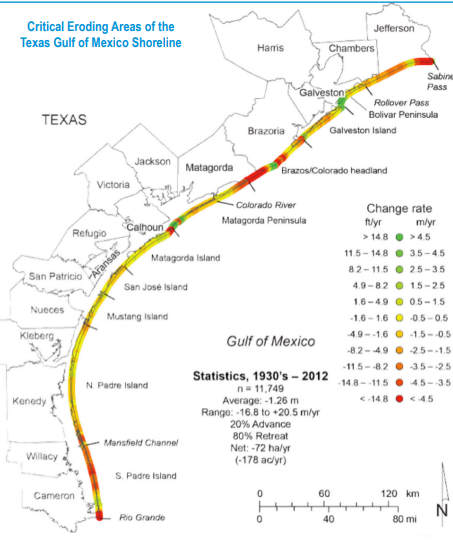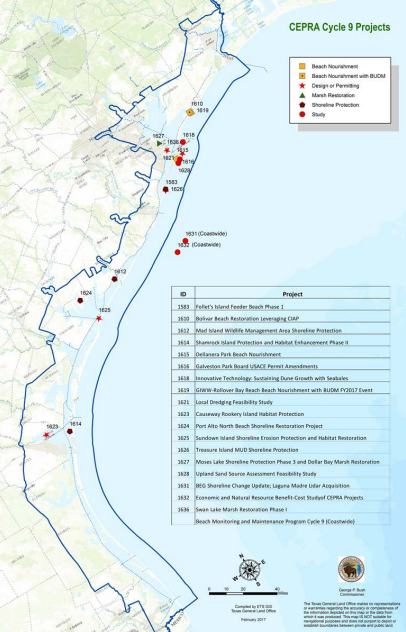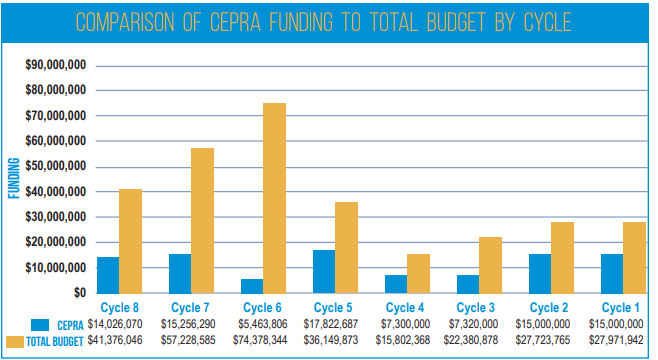Introduction
The continuous effect that changes in environmental conditions have on the coastline leads to its gradual alteration. Although coastal erosion is an inevitable process, it has been developing at an increasingly fast pace over the past few decades (Shi et al. 1347). The specified phenomenon can be attributed to an array of factors, yet they are predominantly classified as human-induced (Shi et al. 1346). The issue of coastal erosion has recently become a major concern for residents of Texas (Texas General Land Office, “Report” 2). The erosion of coastal areas will not only affect the environment but also have a drastic effect on the lives of Texas residents. Therefore, measures must be taken to prevent dire outcomes for the economic, financial, social, and environmental aspects of life in Texas.
Coastal Erosion in Texas: Exploring the Nature of the Phenomenon
Current Situation
At present, the levels of coastal erosion in Texas are at the level of 4.0 miles per year (Texas General Land Office, “Report” 3). Although the specified rate is comparatively slow compared to the drastic 55 miles per year, which is currently the highest rate in the record of Texas coastline destruction, it still needs further management (Texas General Land Office, “CEPRA”) (see Figure 1). At present, the highest level of coastline erosion can be observed in Sabine Pass to Bolivar Roads (Galveston County) and has reached the drastic 80.6% (Texas General Land Office, “Report” 3).
However, the lowest rate of coastline destruction, which can be observed in Aransas Pass to Padre Island National Seashore and amounts to 41.4% of eroding shoreline, is also quite high (Texas General Land Office, “CEPRA”). To handle the situation, the Texas government has recently issued a regulation (Coastal Erosion Planning & Response Act, or CORPA) that encourages the active beach nourishment, environment stabilization, and the restoration of unique habitats and their elements (particularly, dunes) (Texas General Land Office, “CEPRA”).

Factors and Effects
As stressed above, when considering the issues that contribute to the enhancement of the coastline erosion process, one must mention weather conditions and the effects of industrial activities in the vicinity (Texas General Land Office, “CEPRA”). In the context of the Texas environment, the rapid pace of coastal erosion can be explained by the intense weather conditions. For example, the notorious Hurricane Harvey has affected the coastline to a considerable extent due to the massive floods that it caused in 2017 (“In Harvey’s Wake”).
Apart from tropical storms, the phenomenon of coastal destruction, which can currently be observed in Texas, can be seen as one of the results of beach erosion. The latter, in turn, is defined by the presence of factors such as extraordinarily high waves (“In Harvey’s Wake”). Moreover, the subject matter can also be regarded as the outcome of the longshore current, which is very strong in the specified areas (Texas General Land Office, “CEPRA”).
Finally, the lack of actions taken to prevent the specified phenomenon from taking its effects on the Texas environment can also be seen as the primary cause of coastal destruction still taking place. Even though the CEPRA strategy offers rather viable solutions to the problem of coastal erosion, it still has its problems since it does not imply a long-term change and does not affect the core of the problem directly. The outcomes of coastal erosion might seem minor, yet they are going to have a drastic effect on Texas and its residents unless urgent actions are taken (see Figure 2).

Prevention Strategies
As stressed above, the existing framework known as CEPRA has been utilized to handle the problems associated with the increase in the coastline erosion levels. While the CEPRA approach must be credited for its ability to embrace not only environmental but also economic and financial issues associated with the problem, one may also consider adding other elements into it (Portz et al. 54) (see Figure 3). For example, the opportunity for managing information more efficiently must not be overlooked.
By introducing IT tools for building mass awareness levels and helping Texas residents to get prepared for a possible crisis, one will enhance the levels of security. In addition, using traditional tools such as vegetation changes to protect salt marshes can be regarded as a possible means of handling the crisis (Leonardi et al. 65). However, given the fact that hurricanes cause the majority of the damage, one must introduce the latest and the most innovative technology for detecting hurricanes and creating the means of reducing their impact.

Conclusion
The current levels of coastal erosion in Texas have reached drastic levels, demanding that the problem be addressed immediately. Apart from the current framework for managing the problem of coastal erosion, one must consider using innovative approaches along with the focus on building awareness.
In addition, one must keep the focus on providing safety to all residents of Texas. Because of the landscape changes associated with coastal erosion, issues with infrastructure and the possibility of residential property destruction must be prevented, respectively. The specified objectives will demand a radical change in the direction of the current framework. Particularly, one must place emphasis on the development of prevention strategies that are based on the use of innovative technology for detecting emerging threats. Thus, an efficient solution to the current concern about the destruction of the Texas coastline and the effects that it will have on the local habitats, infrastructure, etc., will be addressed.
Works Cited
“In Harvey’s Wake.” Texas Tribune, n.d. Web.
Leonardi, Nicoletta, et al. “A Linear Relationship Between Wave Power and Erosion Determines Salt-Marsh Resilience to Violent Storms and Hurricanes.” Proceedings of the National Academy of Sciences, vol. 113, no. 1, 2016, pp. 64-68.
Portz, Luana, et al. “Dune System Restoration in Osório Municipality (Rio Grande do Sul, Brazil): Good Practices Based on Coastal Management Legislation.” Beach Management Tools-Concepts, Methodologies and Case Studies, vol. 1, no. 1, 2018, pp. 41-58.
Shi, Benwei, et al. “Determination of Critical Shear Stresses for Erosion and Deposition Based on in Situ Measurements of Currents and Waves over an intertidal Mudflat.” Journal of Coastal Research, vol. 31, no. 6, 2015, pp. 1344-1356.
Texas General Land Office. “Coastal Erosion Planning & Response Act: A Report to the 85th Texas Legislature.” Glo.Texas.gov. Web.
Texas General Land Office. “Coastal Erosion Planning & Response Act.” Glo.Texas.gov. Web.